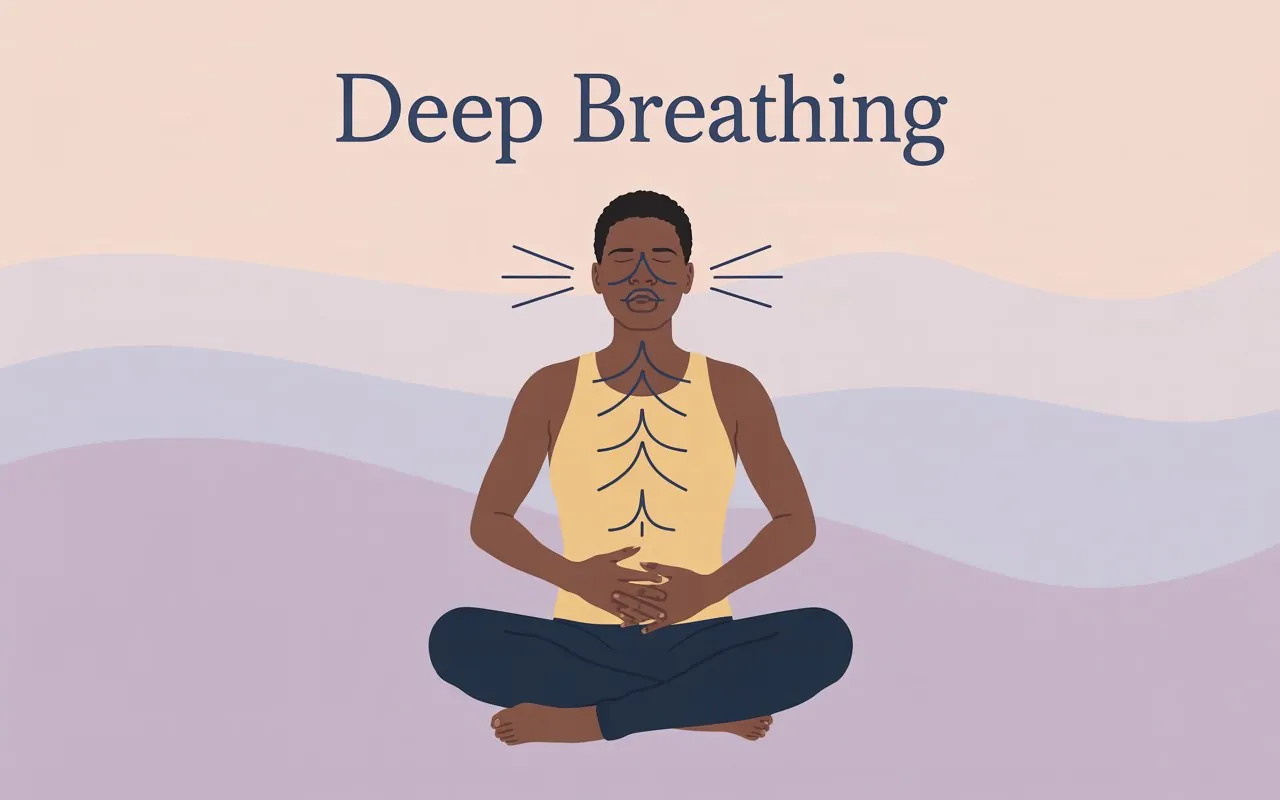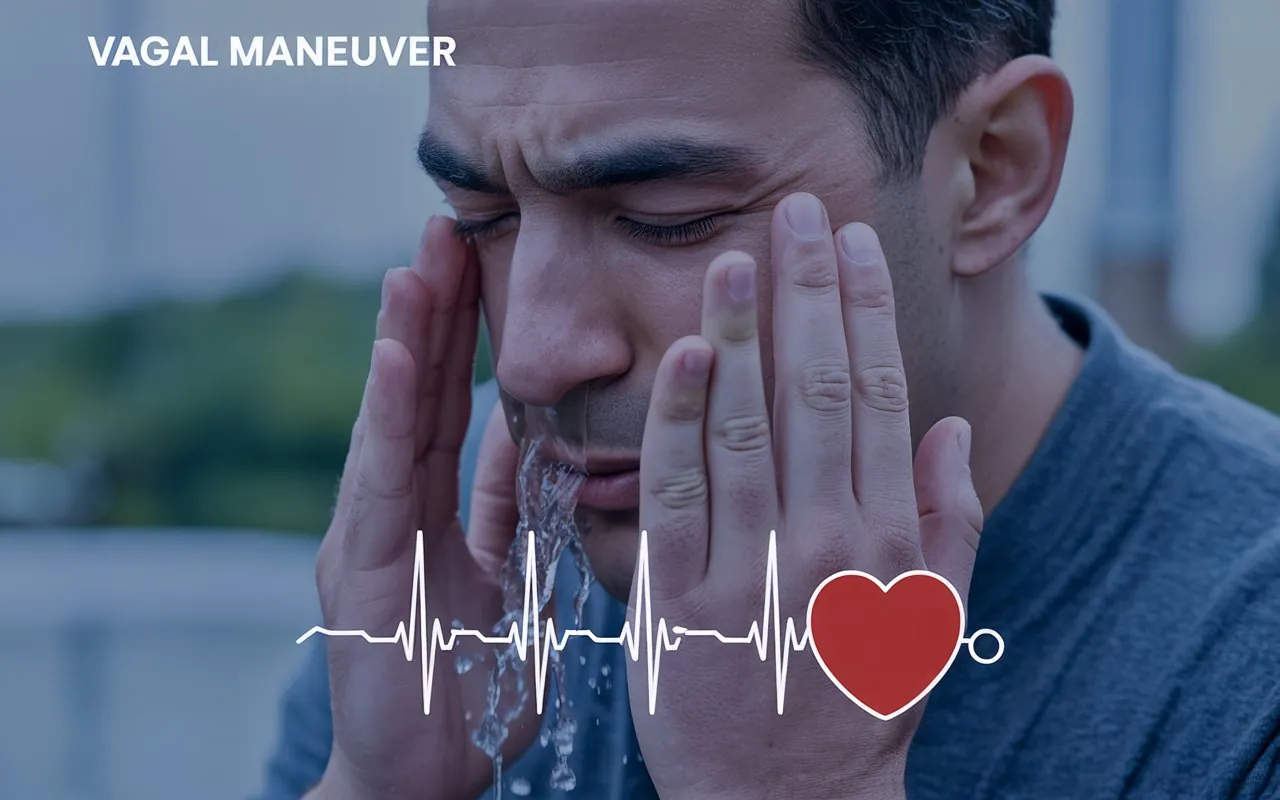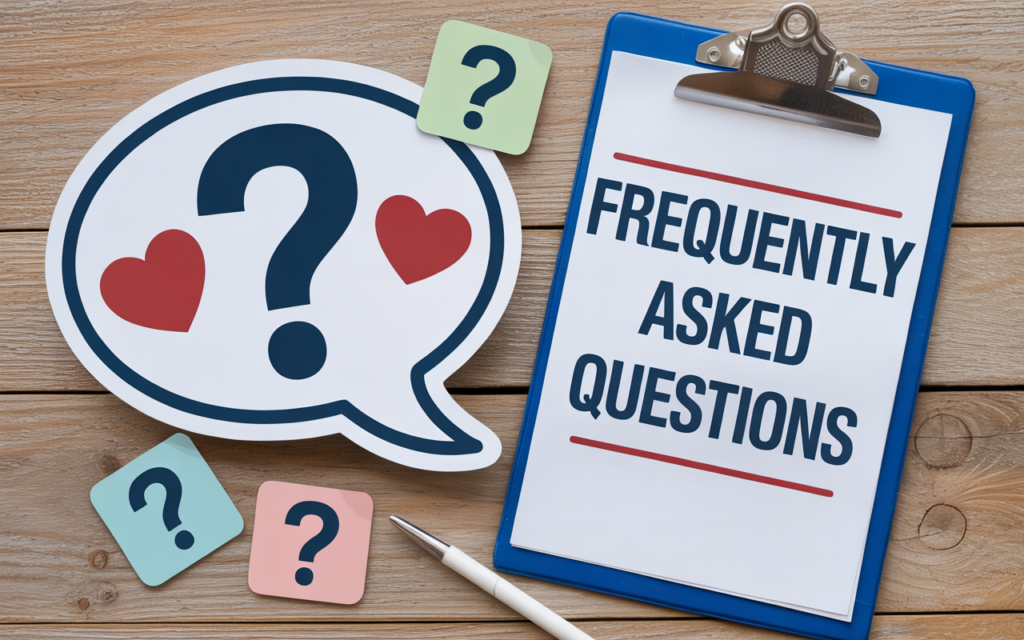Feeling your heart race can be an unsettling and sometimes frightening experience, whether it happens after a stressful event, physical activity, too much caffeine, or seemingly out of nowhere. Many people worldwide search for ways to regain control and find immediate relief without needing a doctor’s visit. Understanding how to lower heart rate immediately at home is both empowering and essential, giving you peace of mind and practical strategies to protect your well-being.
Your heart is your body’s engine, and when it starts beating unusually fast, it can set off a wave of worry and discomfort. The good news is you don’t have to panic or simply wait it out—there are effective, science-backed methods available that can help you reduce your heart rate quickly and safely from the comfort of your own home. Whether it’s for restoring calm after a stressful situation, managing the effects of stimulants, or supporting your overall heart health, learning these techniques is a valuable life skill.
This ultimate, in-depth guide dives into the best ways to quickly lower your heart rate at home, offers tips rooted in medical advice, explains the reasons behind sudden increases in heart rate, and provides the confidence to know when you should seek medical attention. By taking charge of your heart health, you’ll not only feel better in the moment but also build habits for a steadier, healthier pulse every day.
Understanding Heart Rate: What’s Normal and What’s Not
Your heart rate (or pulse) refers to the number of heartbeats per minute. A typical resting heart rate for most adults ranges from 60 to 100 beats per minute (bpm). Athletes or people who exercise regularly might have heart rates as low as 40 bpm, while children and teenagers tend to have faster pulses.
Temporary heart rate fluctuations are normal: they go up during exercise, moments of excitement, when you’re anxious, or after drinking caffeine. Problems arise when your heart rate stays high at rest, your pulse feels wild or erratic, or you experience symptoms like chest pain, dizziness, or breathing trouble. In such cases, seeking medical advice is crucial.
Common, non-serious reasons for a fast heart rate include:
- Emotional stress and anxiety
- Physical activity
- Stimulants like caffeine and nicotine
- Alcohol consumption
- Dehydration
- Hot weather or fever
- Sudden shock or fright
For most healthy people, a racing heart isn’t dangerous on its own. However, it’s vital to recognize when you need home remedies—and when you should call a doctor. In the sections ahead, we’ll outline both.
How to Lower Heart Rate Immediately at Home

If your heart is beating quickly and you need to lower it right away, try these proven self-help techniques that can slow your heart rate within minutes. Each method is simple, doctor-recommended, and can be practiced safely at home.
1. Deep, Slow Breathing

Mastering deep breathing is one of the easiest and most effective ways to lower heart rate immediately at home. Slow, mindful breathing calms your nervous system and signals your heart to slow down.
Step-by-step breathing technique:
- Sit or lie down comfortably. Relax your shoulders.
- Inhale slowly through your nose for 5–6 seconds, inflating your belly.
- Hold your breath for 2–3 seconds.
- Exhale gently through your mouth for 7–8 seconds, emptying your lungs.
- Repeat for several minutes or until your heart rate decreases.
Variations that work:
- Box breathing (inhale, hold, exhale, hold — four seconds each)
- 4-7-8 breathing technique (inhale four seconds, hold seven, exhale eight)
Regular deep breathing, even when you’re not anxious, can help train your body to keep your pulse calm more of the time.
2. Vagal Maneuvers: Instant Calming Techniques

Vagal maneuvers use simple actions to stimulate the vagus nerve, which controls your body’s “rest and digest” response. These methods are often used in clinical settings but can easily be done at home for short, non-serious episodes of rapid heartbeat.
Popular vagal maneuvers:
- Valsalva maneuver: Take a deep breath, pinch your nose, close your mouth, and gently bear down as if having a bowel movement for 10–15 seconds. Release and breathe normally.
- Coughing: Take a deep breath and forcefully cough several times in a row.
- Diving reflex (cold water on the face): Splash your face with cold water, place an ice pack wrapped in a towel on your face, or submerge your face in cold water for 10–20 seconds.
- Gag response: (Not for everyone) Activating the gag reflex can also stimulate the vagus nerve.
Be sure to try these techniques only if you’re not feeling faint, weak, or experiencing chest pain. If you have an underlying heart condition, always discuss these methods with your doctor in advance to be sure they’re right for you.
3. Relaxation and Mindfulness for Quick Relief

Mental tension often drives up your pulse. Fortunately, calming your mind can lower your heart rate almost as quickly as deep breathing.
Effective relaxation methods at home:
- Meditation: Sit, close your eyes, and focus on your breath, counting each inhale and exhale.
- Mindfulness: Notice your body, sensations, and surroundings without judgment.
- Visualization: Picture yourself in a peaceful place, such as a cozy beach or a forest, and imagine all your senses there.
- Progressive muscle relaxation: Systematically tense and release each muscle group, starting with your toes and moving up to your head.
Listening to relaxing music, spending time with pets, or enjoying nature—either in your garden or on a porch—can also help.
4. Drink Water and Stay Hydrated

Dehydration can make your heart work harder and increase your pulse. If your heart rate spikes, one of the quickest fixes is to drink a tall glass of cool water and sit down to rest.
Quick check: If your urine is dark yellow, that’s a sign you need more fluids. On hot days or after sweating, you might need to drink more than usual.
5. Cool Down or Warm Up, Depending on the Cause
Temperature changes can both increase or decrease your heart rate. Overheating forces your heart to work harder, while immersion in cold water (even just your face) engages your body’s natural “diving reflex,” slowing your pulse.
Try these temperature-based strategies:
- Splash cold water on your face or apply a cool cloth to your neck.
- Move to a cooler or shaded area if you’re overheating.
- If your heart is racing due to tension or anxiety, a warm bath or shower may help relax your body and steady your pulse.
6. Gentle Movement: Mindful Exercise
If you feel well (not dizzy or short of breath), slow, gentle movement can also lower your heart rate—especially if you’re anxious or have been sitting for a long time.
Some options:
- Simple yoga stretches focused on breathing.
- Tai chi or light stretching in a calm environment.
- A slow, mindful walk outdoors with deep breathing.
Never push yourself to exercise if you feel weak, faint, or have chest pain.
How to Lower Heart Rate Immediately at Home: Emergency vs. Non-Emergency
Most short-term increases in heart rate are harmless, but it’s essential to recognize the difference between an anxious moment and a medical emergency.
When to Call a Doctor or Seek Urgent Help

Don’t try to “wait it out” at home if:
- Your heart is racing for over 30 minutes and won’t come down
- You feel chest pain, pressure, or tightness
- You faint, nearly faint, or feel confused or weak
- You struggle to breathe
- Your heart rate goes over 120-140 bpm persistently at rest
- You have a known heart condition or are on heart medication
Call emergency services if you experience these symptoms. Fast action saves lives.
When You Can Safely Try Home Methods
Home remedies for high heart rate are effective if:
- You know the trigger (exercise, caffeine, anxiety, dehydration, or mild illness)
- You’re not having other symptoms (chest pain, fainting, trouble breathing)
- Your racing pulse doesn’t last more than 20-30 minutes after self-soothing
- You feel physically well after calming down
If you’re unsure, it’s best to err on the side of caution and call your doctor to discuss your symptoms.
Preventing Fast Heart Rate: Lifestyle Tweaks for Daily Calm
Quick fixes are helpful, but for a steady, calm heart day after day, consider these long-term strategies.
1. Stay Active—but Pace Yourself
Regular aerobic exercise (walking, cycling, dancing, swimming) strengthens your heart, allowing it to pump more efficiently and keep your pulse lower even at rest. Most people benefit from at least 150 minutes of moderate exercise each week. Don’t jump from zero to intense workouts—increase your activity slowly over time.
2. Eat for a Healthy Heartbeat
Certain foods help maintain a steady and healthy heart rate.
- Omega-3-rich foods: Salmon, sardines, walnuts, chia seeds, and flaxseeds support heart rhythm and reduce inflammation.
- Potassium-rich foods: Bananas, avocados, sweet potatoes, spinach, and beans help maintain fluid balance and normal heartbeat.
- Magnesium-rich foods: Leafy greens, nuts, seeds, beans, and whole grains may prevent irregular heartbeats and muscle cramps.
Cut down on highly processed foods, fried items, and too much salt and sugar, as these can make your heart work harder.
3. Limit Stimulants
Reduce caffeine, energy drinks, and pre-workout supplements that list stimulants. For some, even small amounts of coffee or soda can trigger fast heartbeats or palpitations. Find your personal tolerance, and replace high-caffeine beverages with water or herbal teas.
4. Prioritize Sleep
Lack of quality sleep increases levels of stress hormones and triggers irregular, rapid heartbeats. Prioritize restful sleep by maintaining consistent bedtimes, creating a cool and dark sleep environment, and turning off screens at least an hour before bed.
5. Manage Everyday Stress
Unchecked stress is a major driver of high heart rate. Build relaxation into your day with:
- Daily walks in nature or a green space
- Journaling, creativity, art, or hobbies
- Scheduled time for social connection, fun, and laughter
Mind-body practices—like yoga, meditation, tai chi, or deep breathing—are proven ways to lower stress and, over time, stabilize your heart rate.
6. Avoid Smoking and Limit Alcohol
Nicotine and excessive alcohol are triggers for higher heart rate and heart rhythm problems. Consider support if quitting these is a challenge, and watch for hidden nicotine in vaping products.
7. Keep Medical Conditions in Check
Conditions like high blood pressure, thyroid disorders, and diabetes all affect your pulse. Take prescribed medications, have regular check-ups, and follow your doctor’s advice on managing these issues.
Other factors that raise heart rate:
- Thyroid hormone imbalances (especially overactive thyroid)
- Fever and illness
- Blood sugar spikes and drops (especially in people with diabetes)
- Anemia or low hemoglobin levels
- Medications for asthma, ADHD, or congestion (read labels for stimulants)
- Recreational drugs like amphetamines or cocaine
Step-by-Step Table: Summary of Home Remedies
| Remedy | Actionable Steps | When to Use |
|---|---|---|
| Deep Breathing | Inhale slowly (5–6 seconds), hold, exhale slowly (7–8 seconds); repeat | Any time heart races |
| Vagal Maneuvers | Valsalva, coughing, splash cold water, gag reflex | Sudden palpitations |
| Relaxation/Meditation | Meditate, visualize, listen to calm music, progressive relaxation | Stress/anxiety, mind racing |
| Hydration | Drink a glass of water, eat hydrating foods | Post-exercise, heat, dry mouth |
| Temperature Adjustments | Splash cold water on face/neck, move to cooler space, warm bath if anxious | Overheated, emotional |
| Gentle Movement | Yoga, stretching, mindful walk | Mild sensation, not dizzy |
| Avoid Stimulants | Skip caffeine, energy drinks, smoking | Preventive or if triggered |
The Role of Daily Habits in Heart Rate Control
Cardiovascular Exercise
Over time, regular moderate exercise strengthens your heart, so it pumps more efficiently and beats less frequently. Jogging, swimming, cycling, and brisk walking are excellent options.
Strength Training
Building muscle through weight lifting or bodyweight exercises also supports heart health and steady cardiac rhythm.
Nutrition for a Healthy Pulse
A diet high in colorful vegetables, berries, fruits, healthy fats, nuts, seeds, whole grains, and lean protein supports blood pressure, cholesterol, and heart rhythm control.
Rest and Stress Management
Quality sleep and stress management reduce the hormones that speed up your heart and make symptoms less likely to occur.
Heart-Healthy Food Examples
| Food | Benefits for Heart Rate and Rhythm |
|---|---|
| Salmon, sardines | Omega-3s help maintain steady heart rhythm |
| Bananas, sweet potatoes | Potassium helps regulate heartbeat and fluid balance |
| Leafy greens, beans | Magnesium aids muscle and nerve function |
| Flaxseeds, walnuts | Omega-3s reduce inflammation and support vessel health |
| Garlic, oats | Can support blood pressure and reduce strain on the heart |
| Avocado, nuts | Healthy fats stabilize heart rhythm |
How to Lower Heart Rate Immediately at Home: Your Action Plan
- Recognize the cause. Have you just exercised? Are you feeling anxious? Did you drink a lot of coffee? If yes, try the strategies above.
- Sit, breathe deeply, and hydrate. Calm your body and mind.
- Use a vagal maneuver if needed. If you’ve tried breathing and water, this can offer a quick reset.
- Monitor your symptoms. Are there any chest pains, fainting, or shortness of breath? If so, seek immediate medical attention.
- Make lifestyle tweaks for the future. Regular exercise, stress management, a balanced diet, and good hydration habits are your best prevention.
When to Contact a Health Professional
Always err on the side of caution if you’re unsure about your symptoms. Seek immediate care if:
- You feel chest pain, pressure or heaviness
- Your heart rate remains elevated at rest for over 30 minutes
- You feel faint, confused, or out of breath
- You have a personal or family history of heart disease
Frequently Asked Questions on Lowering Heart Rate at Home

Can you lower your heart rate instantly?
You can’t drop your heart rate from high to low in a literal second, but deep breathing, vagal maneuvers, and relaxation can significantly reduce your pulse within a few minutes if the cause is emotional or situational.
How can I check my heart rate at home for accuracy?
- Place your first two fingers on the inside of your wrist or the side of your neck.
- Count the beats for 15 seconds and multiply by four.
- Smartwatches and fitness trackers also accurately monitor heart rate.
Which foods and drinks help keep heart rate down?
- Drink water throughout the day.
- Eat foods rich in potassium and magnesium.
- Enjoy healthy fats from fish, flaxseeds, chia, and nuts.
- Limit caffeine, processed sugar, and alcohol.
Can anxiety or panic attacks cause a racing heart?
Yes, anxiety and panic attacks are frequent causes of rapid heart rate—even in people without heart conditions. Learning stress management is key to preventing these surges.
Are there supplements that help lower heart rate?
Some people find magnesium or omega-3 supplements helpful for steadier heartbeat, but it’s best to consult your health provider before starting any new supplement.
Is a fast heart rate dangerous?
Occasional, explained rapid heartbeats in healthy people are usually safe. Persistent or unexplained fast heart rates—especially with symptoms like chest pain, fainting, or confusion—require prompt doctor evaluation.
Extra Insights: How Does the Body Control Heart Rate?
The heart speed is influenced by your autonomic nervous system, hormones, hydration state, temperature, and emotional state. At times of excitement or danger, your body releases adrenaline to gear you up to “fight or flee.” Returning to calm is the result of relaxing hormones and the action of the vagus nerve.
conclusion
Knowing how to lower heart rate immediately at home means you don’t have to feel powerless when your heart speed picks up. From simple deep breathing to wise lifestyle choices, there’s a toolkit available to help you feel better in the moment and promote a healthier pulse over a lifetime. Remember: most brief heart rate increases are not emergencies. Still, listen to your body, use the above calming techniques, and reach out to a healthcare provider for persistent or severe symptoms.